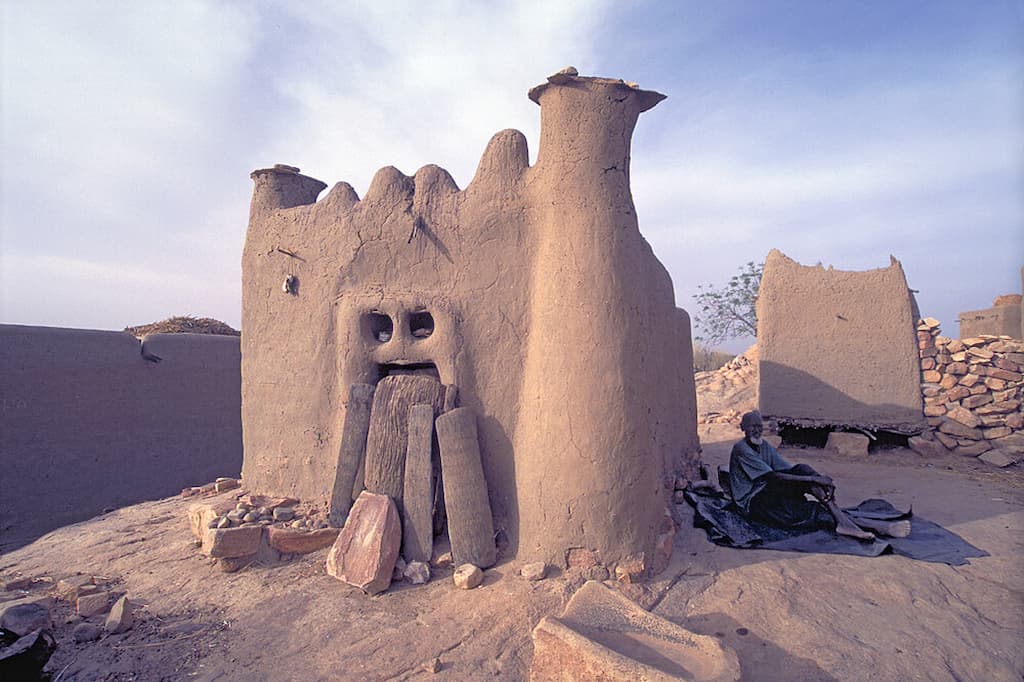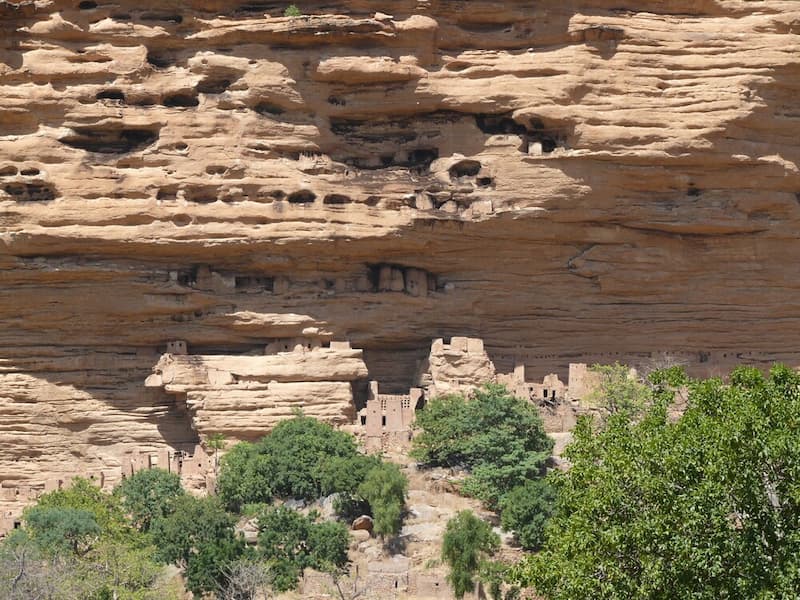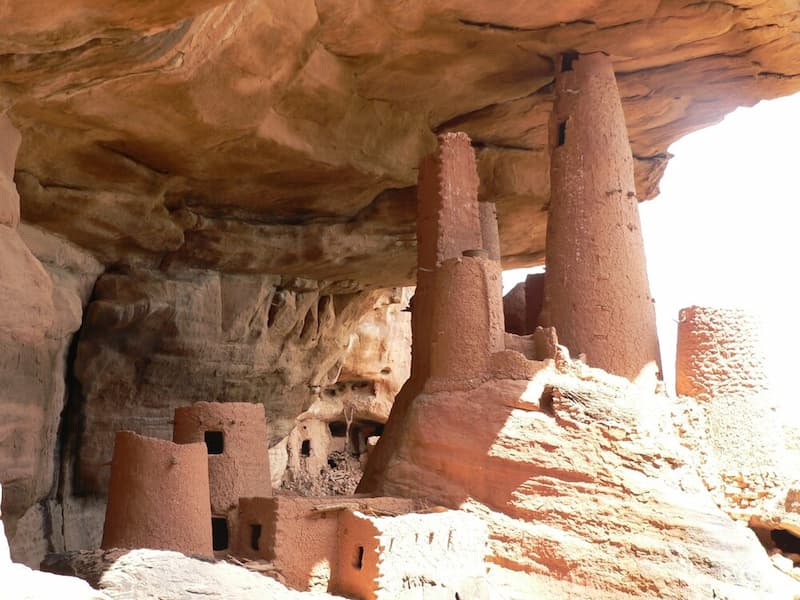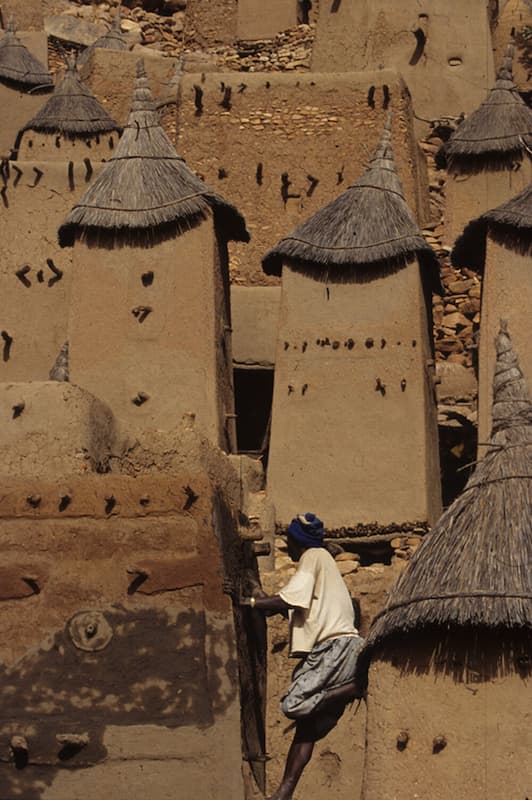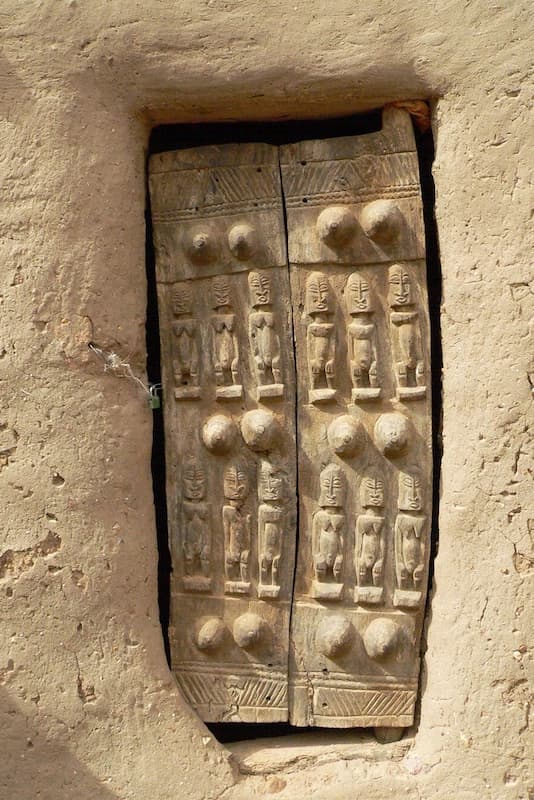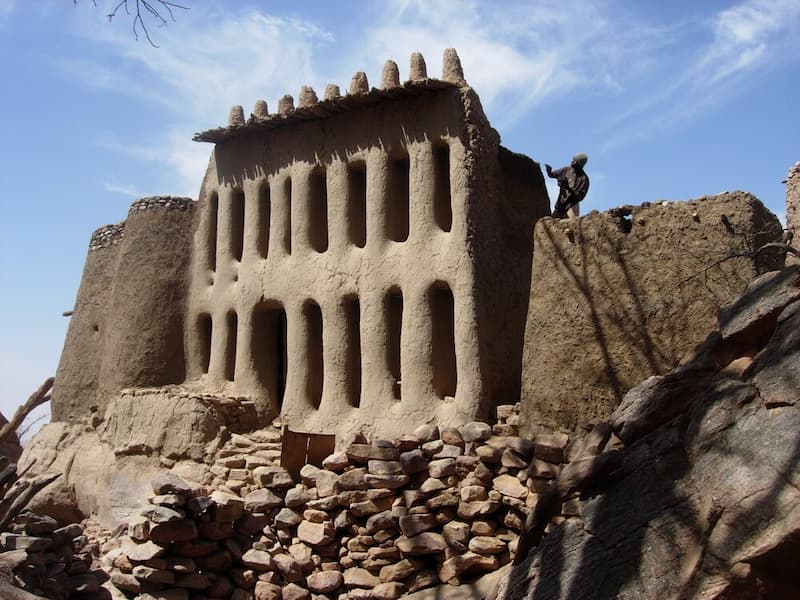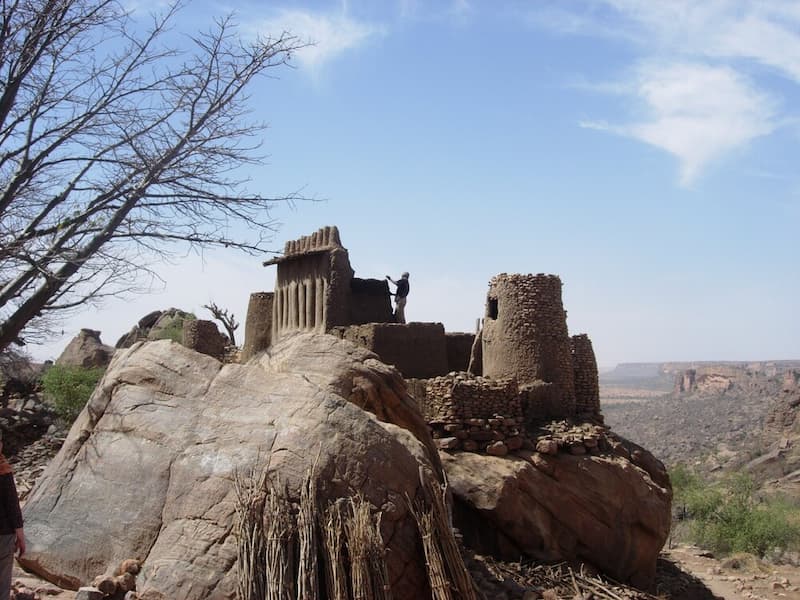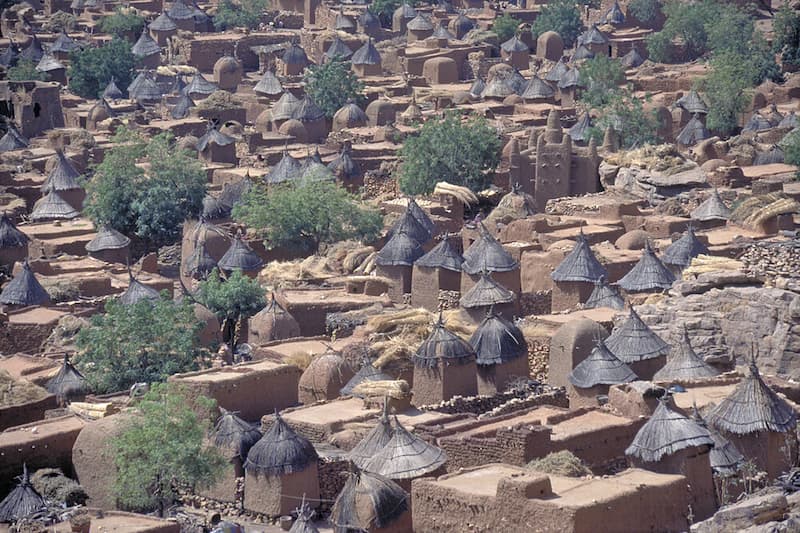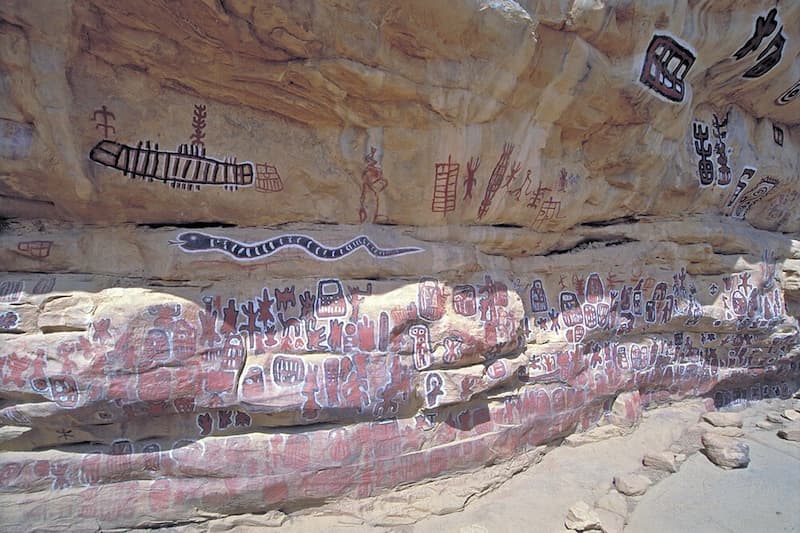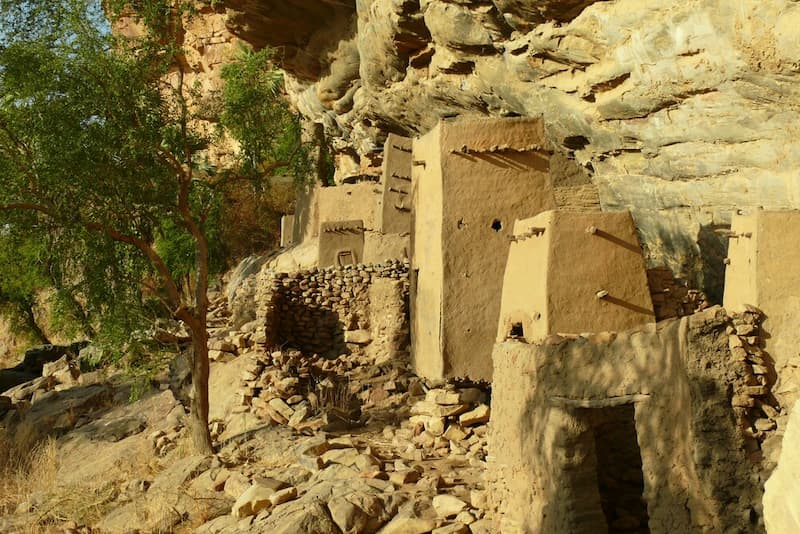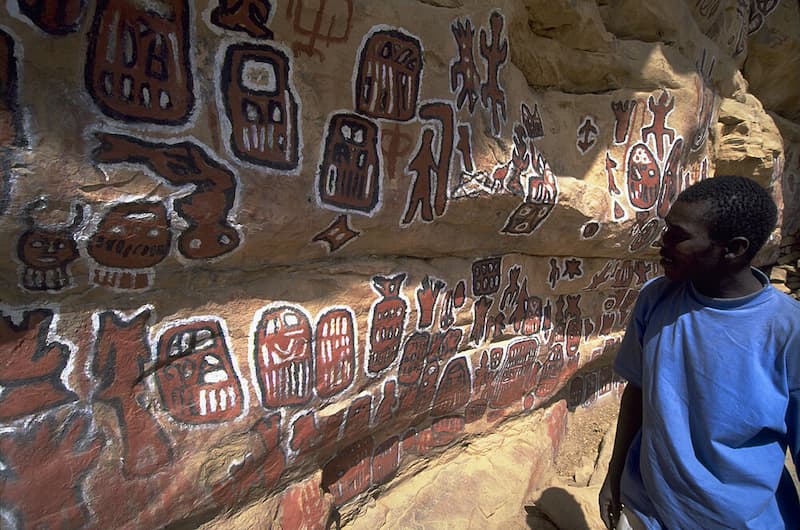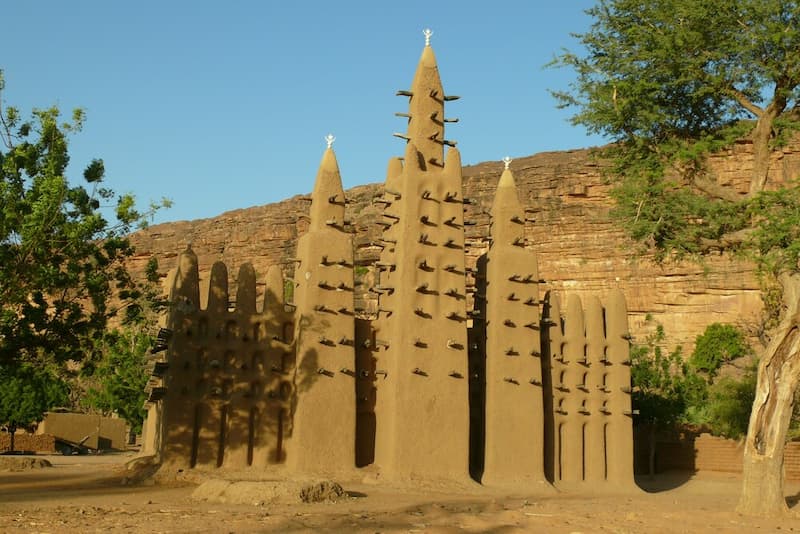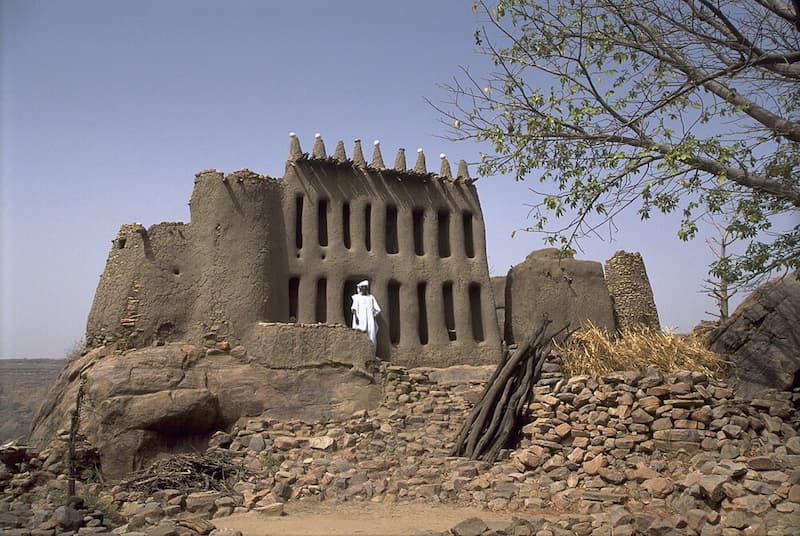By Niyi David
Located in the Mopti Region in Mali, the Cliff of Bandiagara (Land of the Dogons) is one of the most fascinating landscapes – archaeologically, ethnologically or geologically – in West Africa. Also referred to as Dogon Country, it is made up of three geological features: a sandstone plateau, an escarpment, and the sandy plains, covering an area of about 4,000km² filled with some 289 villages scattered all about.
Rising about 500 meters above the sandy plains to the south, the Cliff of Bandiagara is a dramatic sandstone cliff which measures about 150km in length, and is broken by gorges, ravines and rocky tunnels connecting plains to plateau.
It is believed that the area had been settled for at least 2,000 years, was once inhabited by the cave-dwelling Tellem tribe who were displaced by the Dogon who arrived there in the 14th or 15th century. Evidence of Tellem legacy are found in caves carved into the cliffs to bury their dead up and away from flash floods common to the area.
Over the several centuries, the Dogon have been able to preserve their ancient animist beliefs and cultural practices which they brought with them, while they have used the natural shelter of the cliffs to help maintain their cultural identity. Along the length of the escarpment, their villages are scattered, some on the plateau and others at the foot of the cliffs, where they have used the shelter of the cliff as the location for their unique mud-built granaries, rock art and ritual purposes.
Oral tradition claims, they were able to survive the onslaught of the French during colonial period, because of their knowledge of a series of secret natural tunnels woven through the Bandiagara Escarpment, using this to their advantage over their enemies.
Tourists’ activities have increased in the area, and there are fears this will begin to erode the culture of the Dogon, which they have preserved for so long. Local guides provide group tours, while the villages have hostels providing food and accommodation, from where they generate income. One of the most visited places is Sangha village which is the most populated, and is popular for its rock art which they continue to practice, as well as its elaborate circumcision ceremonies.
Classified as a ‘mixed’ site, the Cliff of Bandiagara was listed on both natural and cultural criteria of UNESCO and designated a World Heritage Site in 1989, under criterion (v) and criterion (vii).
Who says the whole world has been seen? A visit to Dogon Country should be an experience; don’t you think?
